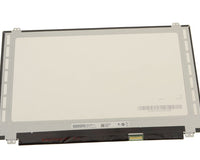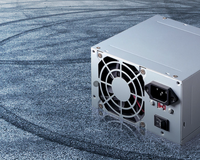In today's digital world, where multitasking and productivity are highly valued, the need for a seamless and efficient workspace is paramount. Docking stations provide a convenient solution by expanding the connectivity options and transforming a laptop into a versatile workstation. These devices offer a wide range of ports and features that enable users to connect multiple peripherals, external displays, and other accessories to their laptops with ease.

-
Understanding Docking Stations: Docking stations are devices that allow users to connect their laptops or other devices to various peripherals and accessories, transforming them into a full-fledged workstation. These devices come in different types, including USB-C, Thunderbolt, and proprietary docking stations, each with its own set of features and compatibility.
-
The Importance of Connectivity: One of the key advantages of docking stations is their ability to expand the connectivity options of laptops. They provide a wide range of ports such as USB, HDMI, DisplayPort, Ethernet, audio jacks, and more, allowing users to connect multiple devices simultaneously. This enables seamless integration of peripherals like external monitors, keyboards, mice, printers, and speakers, enhancing productivity and streamlining workflow.
-
Docking Stations and Non-Thunderbolt Ports: Non-Thunderbolt ports, such as USB 3.0 or USB 2.0, have certain limitations in terms of data transfer speed and power delivery. However, docking stations can overcome these limitations by leveraging their own built-in hardware and technology. They act as intermediaries between the laptop and peripherals, enabling faster data transfer, supporting higher resolution displays, and providing power to charge devices.

-
Advantages of Using a Docking Station with Non-Thunderbolt Ports: When connected to a non-Thunderbolt port, a docking station can still offer significant advantages. For example, it can provide additional USB ports, allowing users to connect multiple USB devices without the need for separate hubs. It can also offer Gigabit Ethernet connectivity for faster and more stable network connections. Furthermore, a docking station can support dual or even triple displays, expanding the screen real estate for multitasking and improving productivity.
-
Factors to Consider When Choosing a Docking Station: When selecting a docking station, several factors should be taken into account. Compatibility with the laptop and its specific port type is crucial to ensure proper functionality. The number and type of ports provided by the docking station should align with the user's requirements. Power delivery capabilities are also important, especially if the docking station needs to charge the laptop or power high-energy devices. Additionally, factors like build quality, brand reputation, and customer reviews can help in making an informed decision.
By considering the benefits and features of docking stations, particularly when connected to non-Thunderbolt ports, users can enhance their connectivity and extend the capabilities of their laptops or devices. Whether it's for professional work, multimedia editing, or simply organizing a clutter-free workspace, a docking station proves to be a valuable tool for improving productivity and efficiency.
Docking stations offer a range of benefits for users, especially when connected to non-Thunderbolt ports. They provide a bridge between laptops and various peripherals, enabling seamless connectivity and enhancing productivity. Whether you need to connect multiple displays, transfer data at high speeds, or simplify your workspace, a docking station can be a valuable addition to your setup. Consider your specific requirements and choose a docking station that best suits your needs, ensuring compatibility and optimal performance.
Tag:docking station, connectivity, functionality, non-Thunderbolt ports, peripherals, workspace, productivity, compatibility, ports, displays





